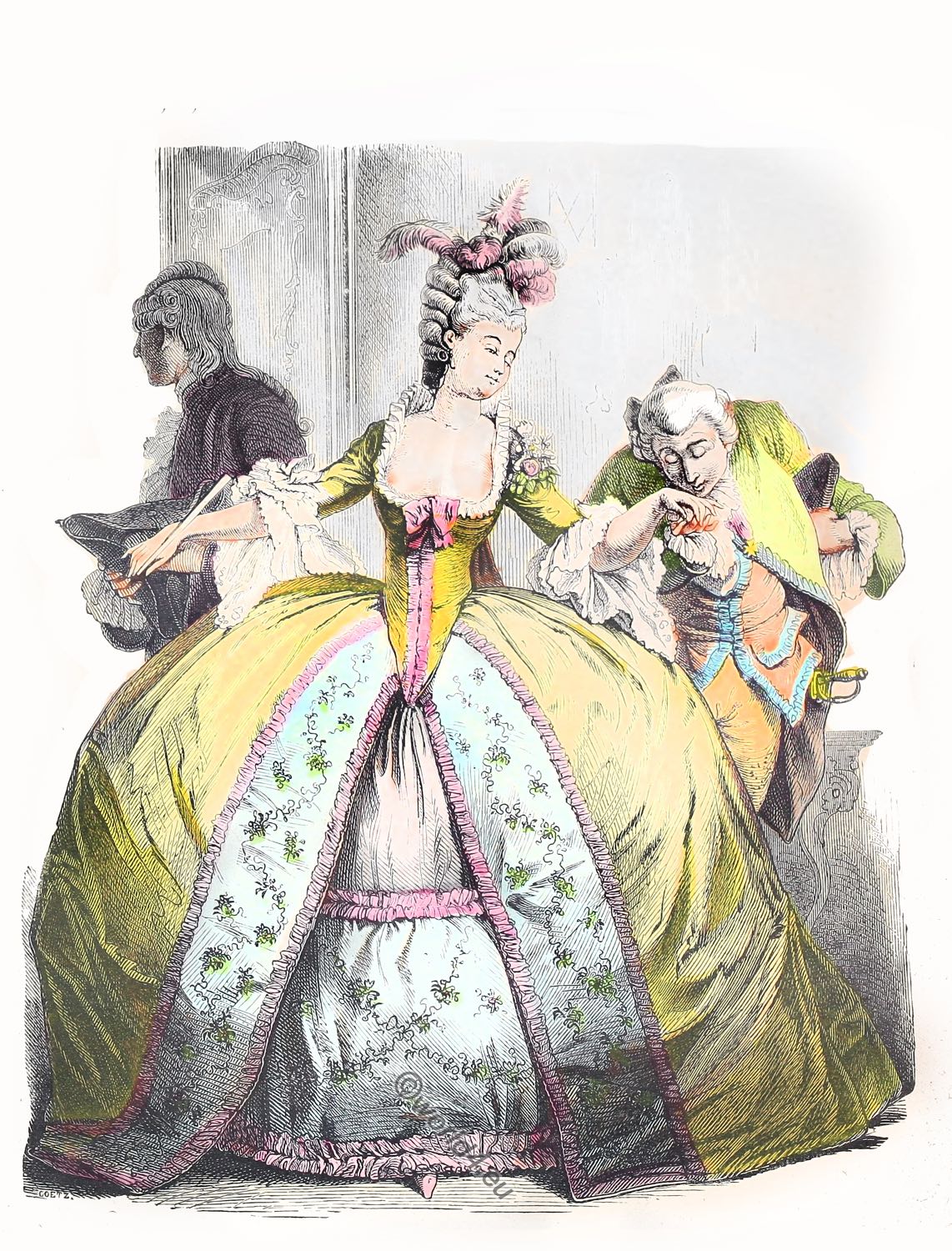
Fashion History of The Eighteenth Century.
Era of the Rococo.
BY the end of the seventeenth century the development of European costume, in the true sense of the term, had attained it’s highest point. From that period onward the dimensions were smaller for a time. Wigs were not so high, the trimming on the various garments was less liberal, the coat became the dress coat.
Under Louis XVI fashion struck out in what seemed new directions, but the changes were more in ornamentation than in general cut. The development in the sphere of attire also seemed to be hastening toward revolution. But this was preceded by one more period which, from a purely artistic point of view, produced fashions of great charm, and of a variety previously unknown (1700-90). In the realm of fashion the leadership of France was as unassailable as it was in the political sphere.
Any novelty, it is true, made its way but slowly, and not always simultaneously in different places. Distance from Paris was decisive in this matter. Towns in the Rhine district were frequently years in advance of large cities like Vienna or Berlin. It was the coming of fashion plates that helped to bring about a more rapid diffusion.
These began to appear from the year 1770 onward in Paris. Then at regular intervals from about 1786 came papers like the Journal des Luxus und der Moden (Journal of luxury and fashion), sent out by Bertuch in Weimar.
France Men’s Dress 1700-1750.
The first important change affected the wig as worn by men. From the beginning of the eighteenth century wigs had become much smaller. The prime movers in this change were the army. Large wigs proved uncomfortable for riding and fighting and other active exercises, and cavalry officers endeavored to overcome the inconvenience by tying back the long side-curls with ribbon. German officers found this sufficient, and thus introduced the fashion of pigtails (see Plate V), but French officers tied the ends of the wig and tucked them into a small silk bag that could be fastened at the top, and thus invented the hair-bag, le crapaud.
In the year 1700 wigs were already no longer worn, as they had been a few years before, in two large masses of curls in front, with a third mass falling over the back.
The curls were now of equal length, and distributed all round, over breast, shoulders, and back (see Plate VIII). The back portion was divided into two parts, each with a knot at the end. Later these took the form of two long pendent queues. This fashion became universally popular, and was retained by aged courtiers till the time of Louis XVI. It fell out of fashion again, however, by the year 1720, when wigs were beginning to be much smaller.
Breeches also underwent important alterations. When men had got tired of the wide ‘slops,’ or pantaloons (about 1660), the culotte worn underneath came into its own again. This was still very wide, and was fastened below the knees with a draw-string. But as the top of the stocking was now being pulled up over the breeches— a practice which the shape of the legs of the breeches made difficult — the breeches were much tighter at the knees. Some years later the whole leg was made much tighter. This change in the breeches was facilitated by the great improvement which had been made in their cut about the year 1700 (see Fig. 407). The necessary width at the seat was obtained by extending the back upward. Since the end of the sixteenth century the front opening – la bavaroise — had been made to button, and this arrangement was now applied to the fastenings at the knees, which were also now buttoned.
The pourpoint was again made tighter, and was buttoned either altogether or from the waist upward. The general cut was unchanged, but the next years saw changes in other ways. The waist varied in length; the cuffs were either broad and open at the back or narrow (either open or closed) or very broad and closed. *) The buttons of the coat and of the waistcoat coat and of the waistcoat (which was like the coat, and came down to the knees—see Fig. 408) were somewhat large, and became an important article of commerce in France and England.
*) Cuffs closed at the back were usually called pavements en pagoda, a name that showed a preference for Chinese models.)

Toward the middle of the century they were made of goat’s hair or of silk, and later of metal. Gold or silver trimming and embroidery were not now so liberally used as they had been under Louis XIV, but they appeared at the same places as in his time—at the coat-edges in front, the slit at the back, on and all round the pocket-flaps, and at the cuff-edges. The material and color of the cuffs were the same as the lining of the coat, and in most cases now the same as the waistcoat. From 1730 the lining no longer extended beyond the large turned back cuffs, but was confined to the cuffs alone. Hunting and riding coats were mostly without reversed cuffs. (See Fig. 410.)

The ribbon bows at the right shoulder of the coat—called aiguillettes, and originally meant to hold up the sword-belt were left as an ornament, though they were now of no use; they came down in four long ends to the elbows. After 1725 they went gradually out of fashion.
L’habit à la française.
The costume just described was called l’habit à la française. Louis XIV added to it as Court dress a richly trimmed shoulder-cloak similar to the Spanish one reaching to the knees. About 1730 this costume underwent important changes. In imitation of the women’s farthingales rods of whalebone were sewn into the skirts of men’s coats to extend them.
At the same time the waistcoats from the waist up were fastened merely with a few buttons, so that le jabot, or frill of lace that surrounded the neck of the shirt, was displayed. This was of the same width and pattern as the cuffs. The appearance of the jabot drove out of fashion the long, hanging, richly embroidered ends of the muslin cravate. The cravate with shorter ends was also soon ousted by the neckcloth knotted at the back and adorned in front with a diamond pin. These neckcloths were also usually of white muslin. Only military men wore over them still another neck-cloth, of colored silk (red or black), which allowed a narrow strip of the white one underneath to peep out above it.
In the second half of the seventeenth century the French adopted one of the Dutch fashions. For riding purposes the corners of the coat-tails were turned outward and buttoned or hooked together. Other nations borrowed this practice from France, and it became universal about 1700. The cut of the coat was not changed, and the skirts were in no way stiffened. This style of coat was adopted everywhere by military men, and it led to the creation in England of the riding coat — the ‘frock.’ In the new style the coat was made closer-fitting and the front skirts were removed.
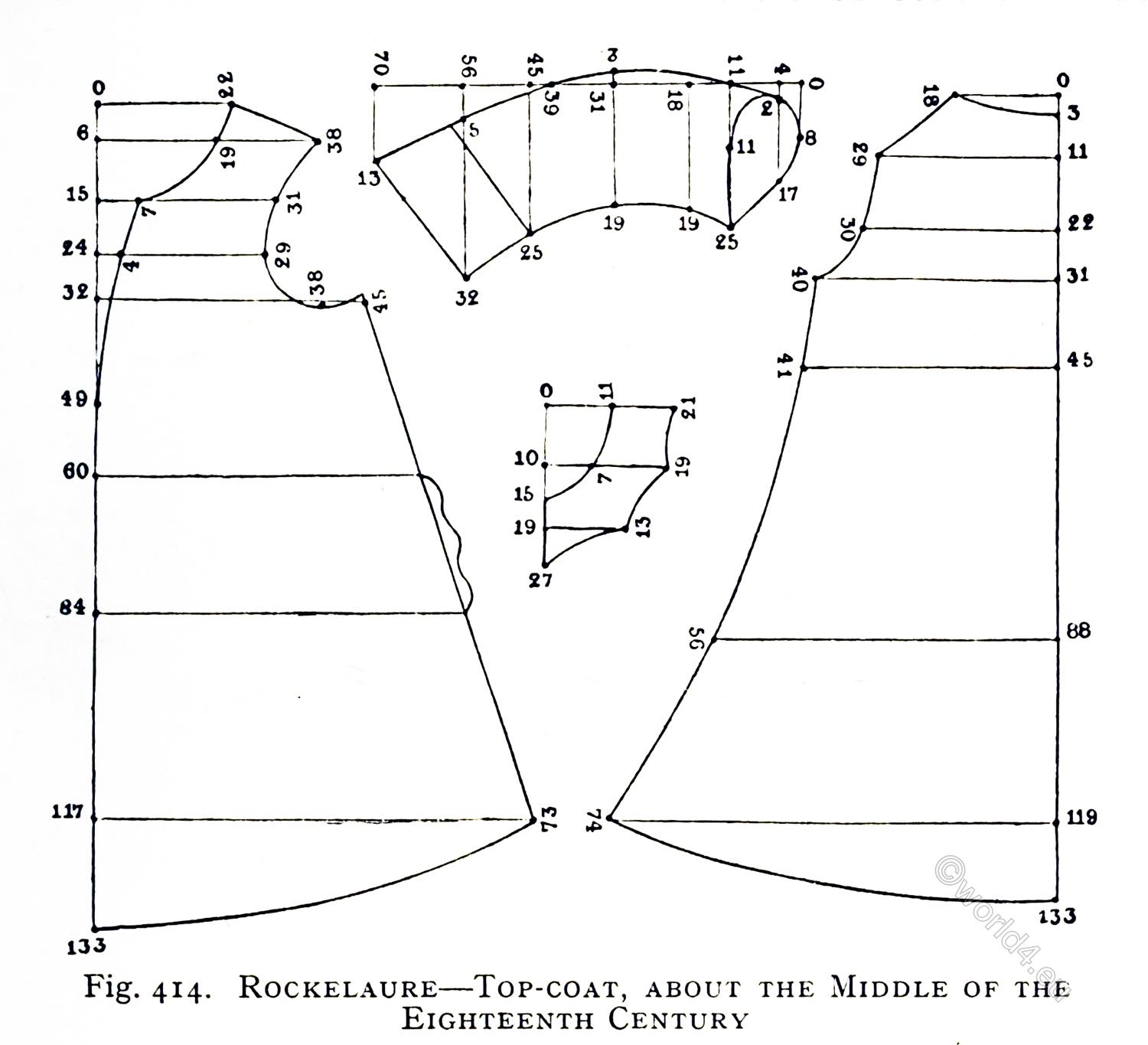
In rough weather an overcoat with pockets and a small cape was worn. It was buttoned, and was called after its inventor, the Duke of Rockelaure. (See Fig. 414.) The garment for travelling was a long, wheel-shaped cloak. For morning dress gentlemen wore a sort of loose dressing-gown. It was made of velvet or silk, lined with silk, and fastened by ribbons round the waist. A waistcoat of the same material was worn beneath it (see Plate X).
The headdress was a tall ‘night-cap’ of silk. The hair-bag, le crapped, was at first only for ordinary wear. For ceremonial or Court occasions gentlemen had to appear with their hair combed back and held together by a ribbon that dangled round the shoulders. Military men, especially in Prussia, wore the stiff pigtail. The front hair was combed back, and that at the sides was crimped into curls. At first three or four curls at each side constituted the fashion. Later there were only two, and about 1790 these were transformed into small, slightly convex toupets, or tufts, called ailes de pigeon (pigeon’s wings).
When this fashion came in the hair above the forehead was gathered into a roll, but afterward it too took the form of a pointed toupet, called vergette à la chinoise (Chinese dusting-brush). Because of this artistic coiffure the three-cornered hat could not be worn; it was carried in the hand or under the arm. It was low in the crown, and the brim was no longer bolt upright. This chapeau-bas had no plume, only a trimming of gold or silver braid. Stockings were no longer worn over the breeches, but under them. They were protected by close-fitting linen gaiters — housseaux. Full attire included walking-stick and sword. The latter was so popular that its use was subject to fixed regulations. Lackeys, servants in livery, commercial apprentices, musicians, and cooks were forbidden to wear one.
Women’s Dress 1750.
Toward the middle of the eighteenth century women’s dress underwent even greater changes than that of the men. The way had been prepared for them in the reign of Louis XIV. Dresses were again supported by the farthingale, which had gone out of fashion a century before. This stood out around the wearer in bell-shape. The fontange, or topknot, soon disappeared entirely, and its place was taken by a simple but high coiffure of curls. The new farthingale, which was not very wide at first, was a framework of hoops made of cane, whalebone, or steel fastened together with strings. Owing to their resemblance to the baskets under which poultry was kept in France they were called paniers, or hen-baskets.
The Farthingale
Already in the time of Louis XIV the farthingale had begun to grow wider. It was at its widest about 1725, when the lowest hoops were often 5 or 6 metres in circumference and the topmost 3 metres. At each side of the top hoop two semicircular pieces of steel were fixed to prevent the skirt from widening suddenly and to keep it in a semicircular shape. Though this was the usual style of farthingale, there were various minor modifications of it.
The circumference varied; the farthingale was sometimes slightly compressed toward the back. These modifications had different names, such as la culbute, le bout-en-train, le tatez-y, etc. All kinds were extremely inconvenient, and frequently brought their wearers into difficulties not only in the streets, but in carriages and when they were passing through doors. They took up the space of three or four people, and women had to twist and turn to avoid obstacles.
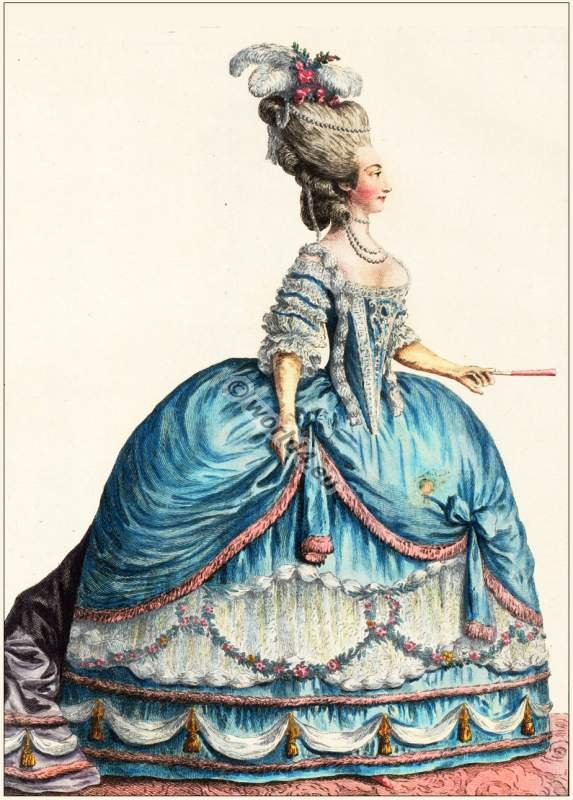
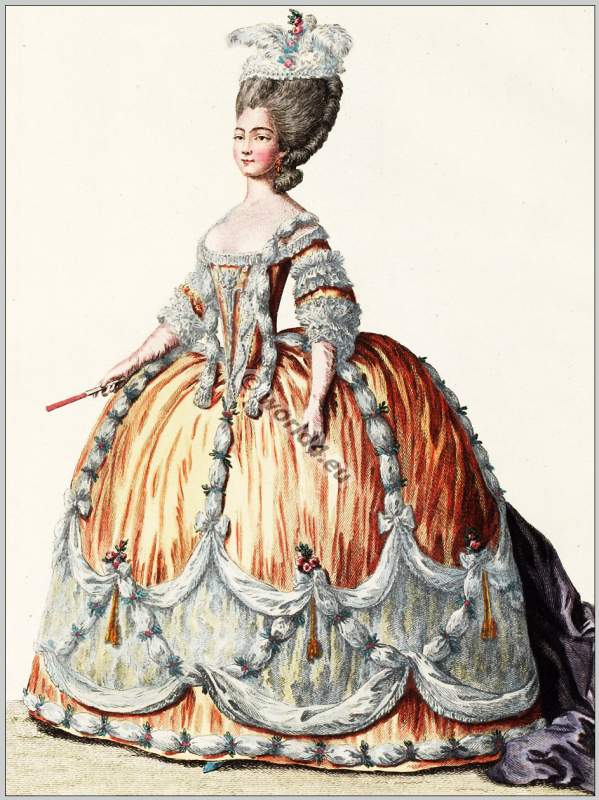


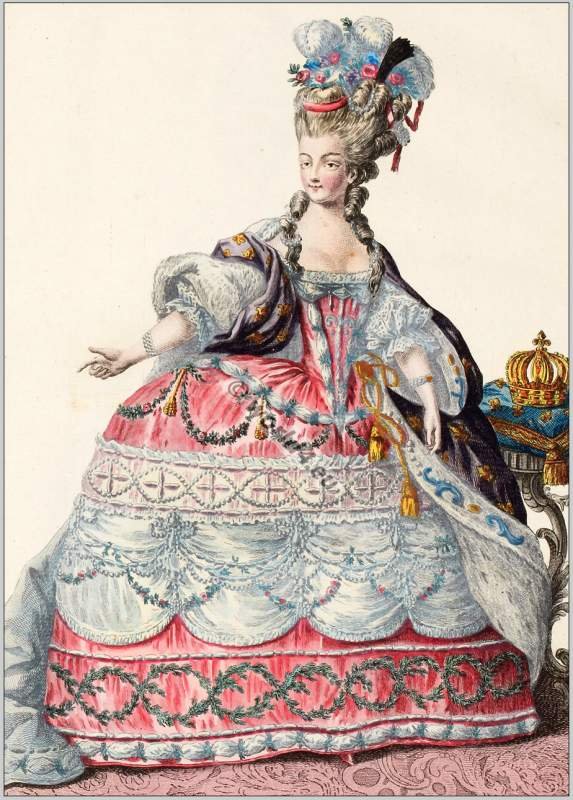
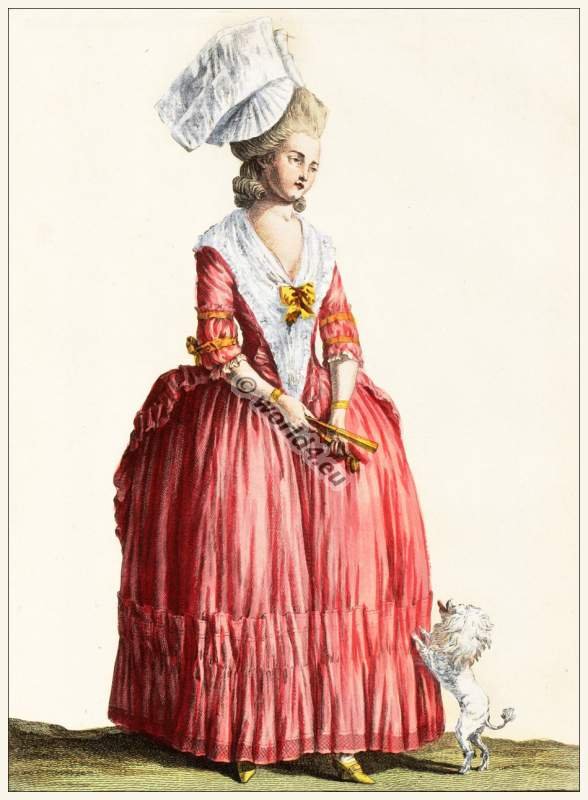
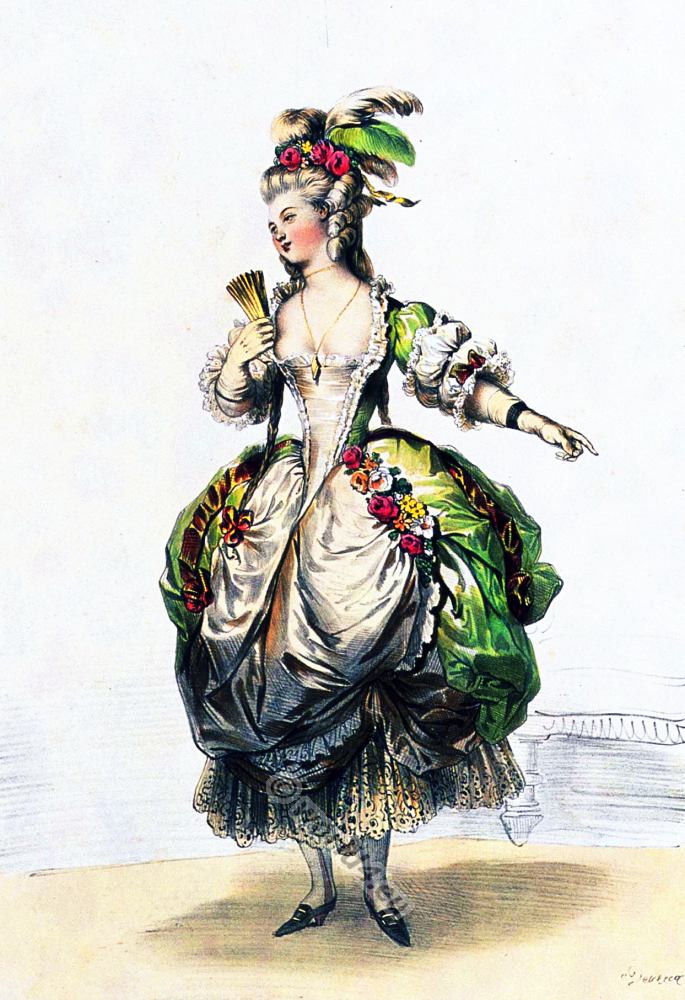
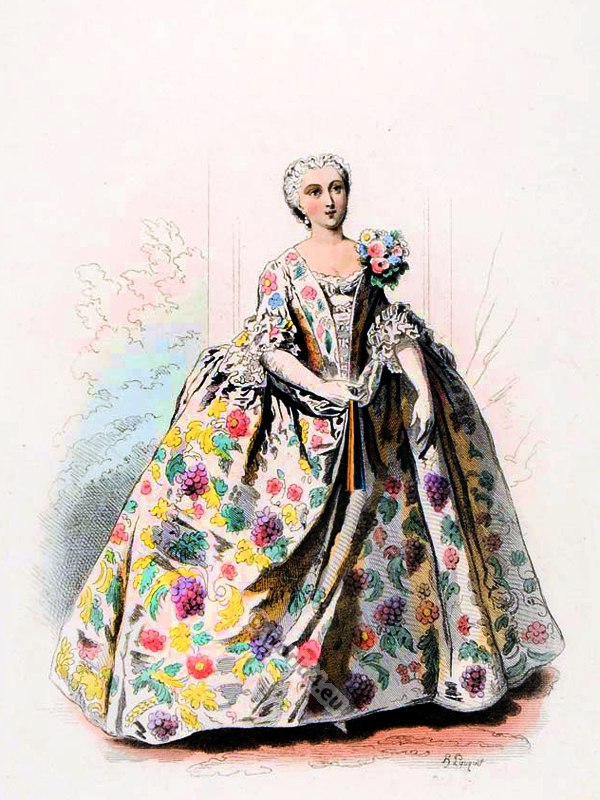
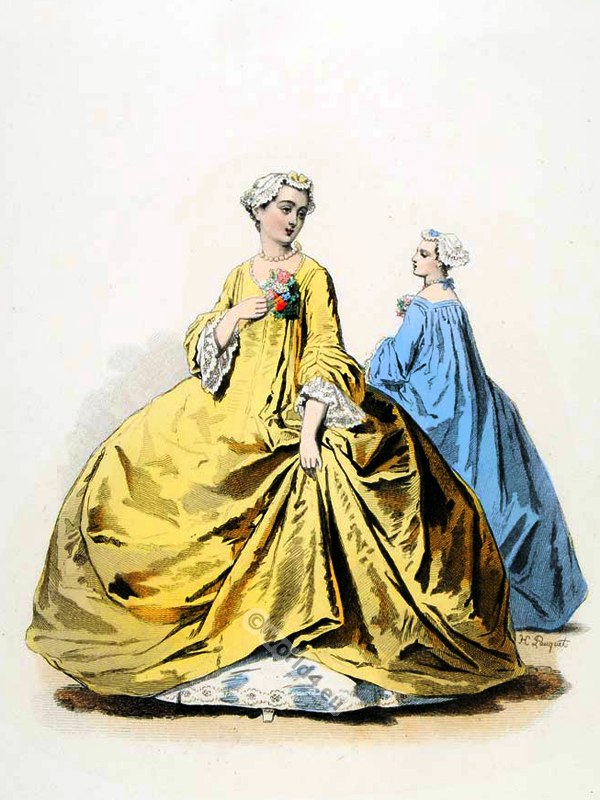
In spite of this the fashion became popular so quickly that at the beginning of the reign of Louis XIV women in all countries, from princesses to working-women, wore this peculiar attire, and a woman without a farthingale was looked down upon. The coming of the farthingale did not at first cause any change in the dresses worn over it, but when it began to increase in circumference the long, trailing gown, open in front and gathered at the back, was no longer a suitable dress. So the gathering at the back was omitted, the train was left off, and the dress was in various ways tucked up with draw-strings. The only changes in the underdress were a greater width and more liberal trimming. About the year 1700 a new style of adornment with whalebone laid longitudinally and across. It was made so that an edge projected.
To produce this edge the coarse linen lining was cut several centimetres narrower at the foot than the material covering the corset. When it was sewn to the edges of the material the latter was bent upward. At the back and in front the English corset had broad laces which were passed over the top of the skirt to keep it down, while the narrow laces at the side were hidden under the skirt. In the front of this corset, in the top of the lining — as in the front bib {la pièce) of the French corset — a small pocket was made to hold fragrant herbs. Both the French and the English styles were laced from the foot upward.
The Contouches
Shortly before the death of Louis XIV ladies began to wear wide over-dresses. These resembled long cloaks with sleeves, without any shaping at the waist ; they hung from the shoulders to the feet, gradually widening downward. These were called contouches. They were open all down the front, and were worn both in the house and out of doors. They were made of silk or of wool, and were fastened—sometimes only at the breast, and in other cases right down to the foot—with bows of broad ribbon.
These contouches were so universally worn about 1730 that hardly any other style of dress was to be seen. Another popular material for them was white or pink taffeta. Young girls wore gauze or embroidered muslin over a dress of taffeta of a strongly contrasted color.
Short contouches, reaching to the knees and worn only indoors, were popular in Germany, and were known as Cossacklein. Like the longer contouches, these were low-necked, and were trimmed with narrow lace. In that respect, as well as in the style of the sleeves, they resembled the other dresses worn at the time.

About the year 1740 the contouche was made with a lining in the form of a close-fitting bodice. It was sewn to the dress only in front ; the back was joined to it only at the neck. The rest of the dress fell loosely down as before. The back of the lining, which was made of coarse linen, was cut in one piece, and only slightly stiffened with whalebone. The front was like that of a corset that laced at the back. The cut of it was the same, and it too had a stiffening of whalebone. The front piece was divided in the middle and arranged for lacing. This fastening, however, was not visible, for the corresponding part of the dress was stretched across the front of the lining and sewn close to the lace-holes, leaving as much of the edge as was necessary to conceal the laced part.
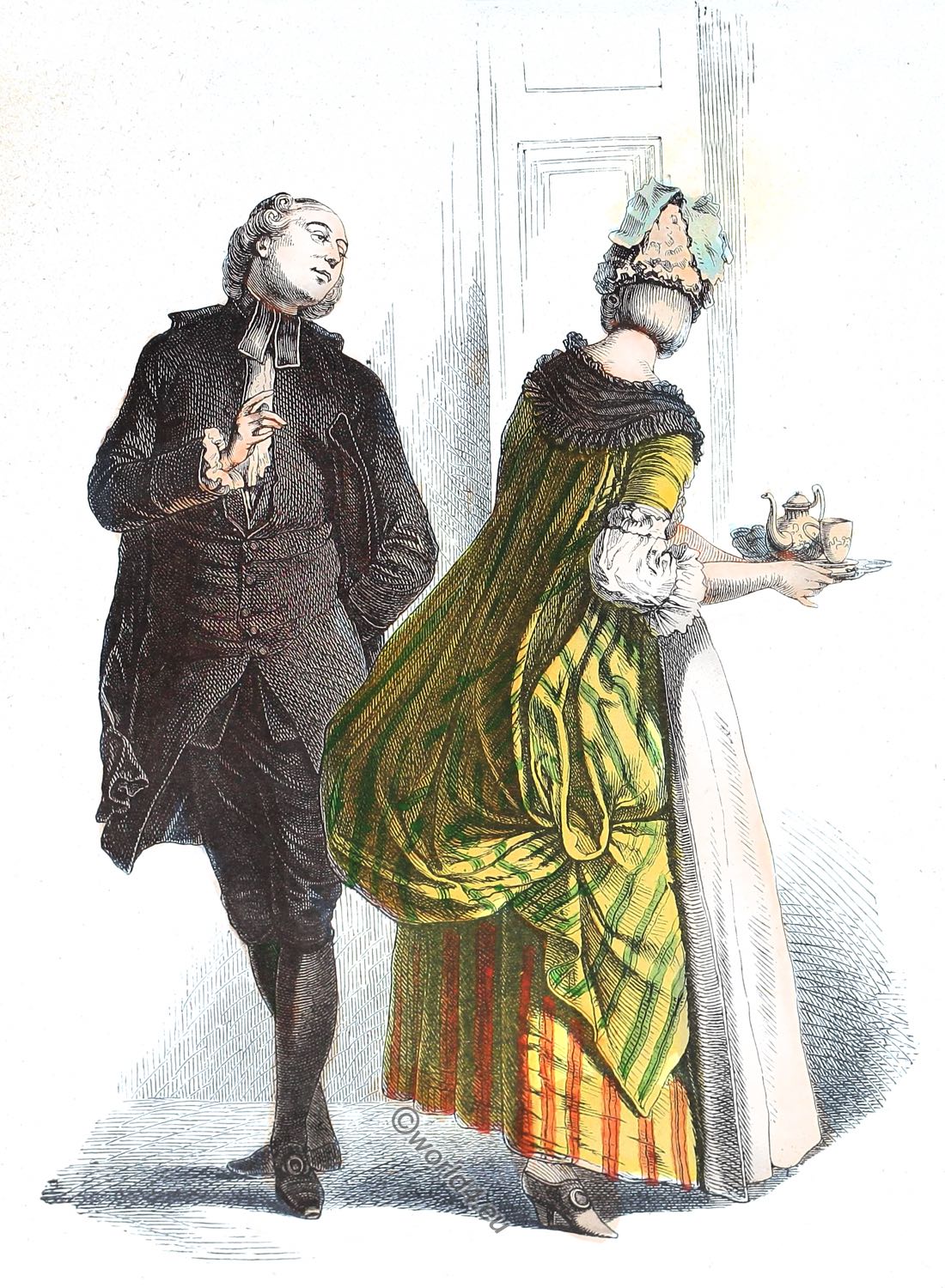
This garment, which in other respects was exactly like the contouche, was called in Germany the Schlender. Sometimes the front of the bodice was entirely separate from the skirt, and was cut like the under-bodice. The skirt was then sewn to the lower edge of the back and pleated. This gave the Schlender exactly the same appearance as an ordinary robe.
Robe Ronde
About the year 1750 farthingales greatly diminished in size. At the same time the contouche gradually went out of fashion. Its place was taken by the robe, or gown, called robe ronde, open from the waist down. This dress was something essentially novel. A separate corset was now rarely worn underneath the bodice, because the lining of the robe was practically a corset. The fastening of the bodice of this robe ronde was always in front, and was either like that of the Schlender or was a Sleeker, or pièce. In the latter case the cut of the material and the arrangement of the whalebone in the lining were copied from the French corset. The material and trimming of the under-dress worn with the robe ronde were always exactly the same as those of the robe.
Toward the middle of the century women began to wear as morning attire garments resembling the contouche, made of fine white material and trimmed with flounces. About the same time it became the fashion to wear at the morning toilet various kinds of powder-mantles and dressing-jackets. As the contouche was as low-necked as all the other dresses, various kinds of neckerchiefs were worn with it. A favorite style was a small triangular follette of black or colored silk. Similar to this were the tippets (palatines), large neckerchiefs made of gauze, crepe, or lace, trimmed with lace, and fastened in front with silver braid or small buttons. For winter wear the tippet retained its former cape form, and was either of velvet or fur or of short black or white feathers.
Up till about 1750 some women still wore the mantilla, a short cloak of velvet, taffeta, or lace, with ‘frills of the same material or small ruches of gauze.
The long-continued use of topknots (fontanges), the back part of which was a cap covering the head, had accustomed women of the middle class to having a portion of their hair concealed, and they were now loath to renounce the practice. With the appearance, therefore, of low coiffures, with which fashionable women wore no headdress, women of the middle classes invented various caps and coifs, which they wore both in the house and out of doors. (Plate VI.)
These were of white gauze or other fine material, and were trimmed with lace and ribbons. Some of them were made over a framework of wire, while others had no such foundation. The most popular were the dormeuses, or negliges. Some of them came down to the eyes ; others left uncovered not only the forehead, but also a portion of the hair. The style depended on the purpose which they were meant to serve.
Till about the year 1750 changes had been confined to the dress, coiffure, and headdress. Shoes remained as they had been, and slippers were worn indoors as before. In bad weather galoshes were put on over the shoes. The customary green silk stockings with pink gussets, however, gave place to white ones. Women continued to use cosmetics and beauty patches, but masks were no longer worn. Gloves were now not only of leather or silk, but also, from 1740 onward, of silk net. Fans were indispensable. Strings of pearls were not now so frequently worn, but diamonds were very fashionable.
During the second half of the eighteenth century fashions underwent a complete change. The feeling prevailed that the old styles had become impossible, and efforts to improve them were being made when the French Revolution broke out and brought about profound alterations.
France Men’s Dress 1750-1790
The first results of the attempt to attain a simpler, more practical, and more comfortable style of dress were a great diminution of ornamentation and a great lessening of the width of men’s clothes. In place of broad trimmings and rich embroidery on coat and waistcoat came narrow braid and simple girlandes. The turned-back cuffs now came hardly half-way up the forearm, and lay close to the sleeves.
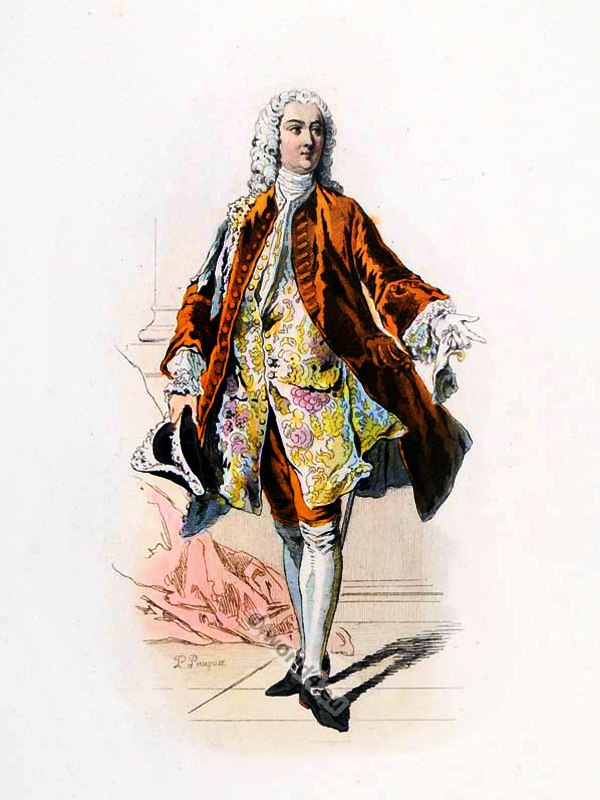

The most remarkable change in the coat, however, was one that came in about 1770. In imitation of the English riding coat the lower ends of the coat front were cut away, thus producing a new style, le frac, or the swallow-tail coat. In other respects this resembled the justaucorps, known as habit à la française, but while the latter was collarless, the former had always a small stand-up collar, le collet. As Louis XVI wore this new style, it soon became universal, and was in 1780 the recognized Court dress in place of the habit à la française. The waistcoat was also shortened and cut away like the coat, so that the lavish embroideries were perforce restricted to a narrow edging. From about 1780 onward the waistcoat was gradually ousted by le gilet. This was copied from the English sleeveless waistcoat. It reached to the abdomen, and was quite straight at the foot, with no tails or skirt.
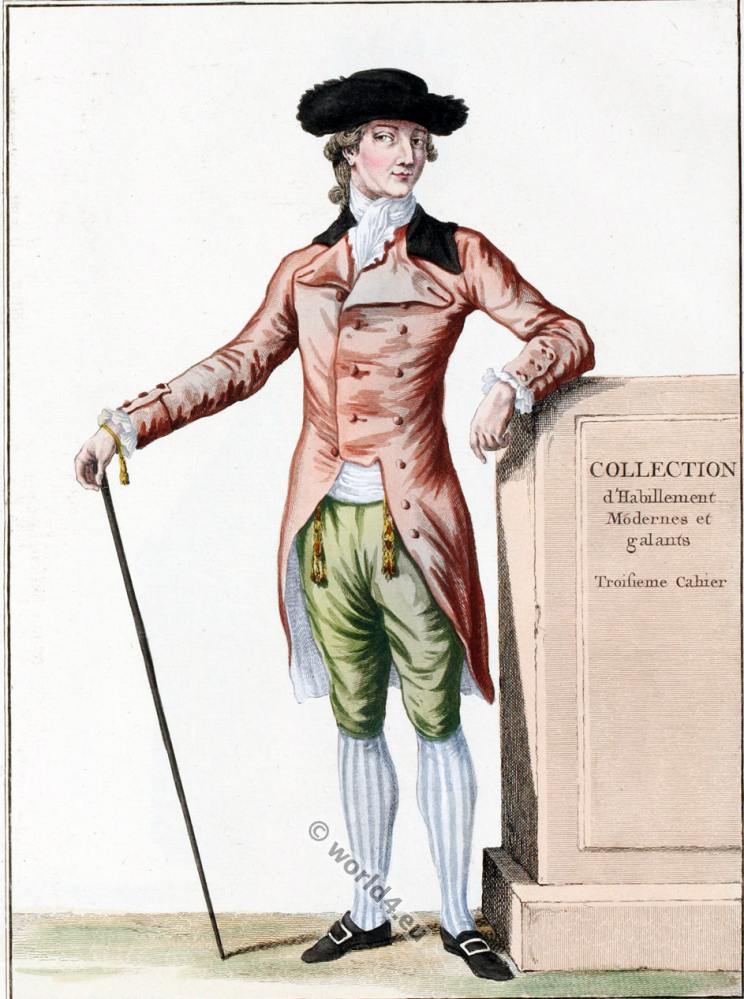
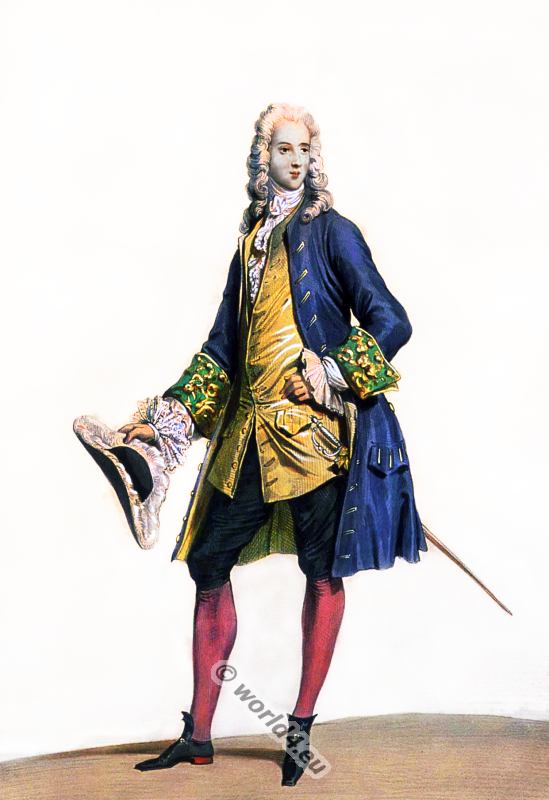
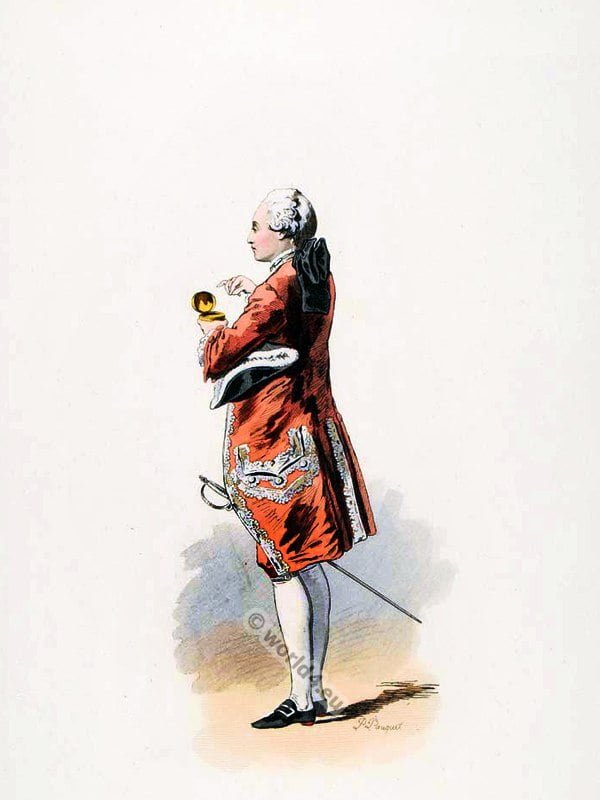
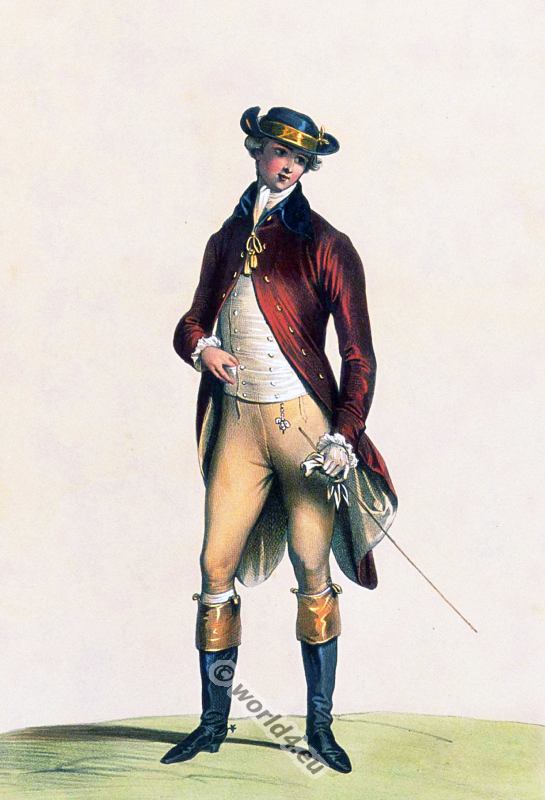
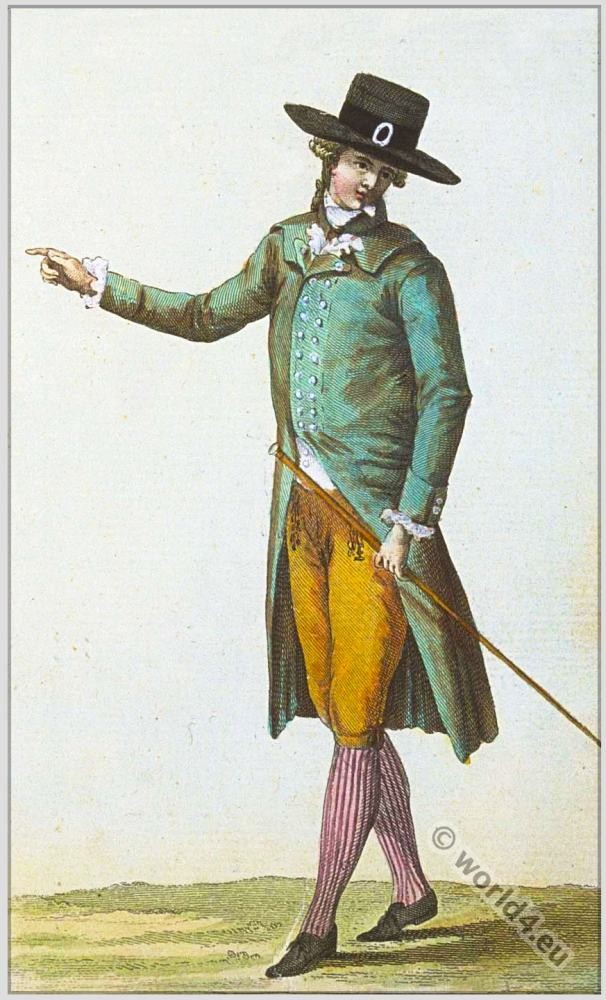
Unlike the waistcoat, the back of the gilet was of the same material (though of inferior quality) as the front ; it was arranged for lacing up to the shoulder-blades. Owing to this false back and the absence of sleeves there was a great saving of material ; this was also effected in the short-fronted waistcoat. This intermediate garment — half waistcoat and half gilet—was called gilet-veste, or veston. Erelong the gilet-veste and the gilet completely drove out the waistcoat proper, and the name veston was applied to both.
The embroidered dress coat and the skirted waistcoat were the Court dress in France till the downfall of the monarchy, but from 1788 onward the lavish ornamentation disappeared. This simplification gave the dress coat the appearance of the frac habillé, which till now had been merely the garment worn for balls or when making morning calls on distinguished persons. With the dress coat the gilet was never worn, but always the waistcoat or festoon, together with the sword. On the whole, however, swords had ceased to be worn since the adoption of the English swallow-tail and the round hat. Gentlemen now carried instead a stick of Spanish cane with a large knob when wearing a round hat.
Nether garments still consisted of long silk stockings and breeches reaching below the knee, where they were not only buttoned, but also fastened with a buckle and strap. Along with the dress coat and gilet France had also adopted a different (an English) style of breeches, which too came into general use. Instead of the buttoned front opening they had a fairly broad flap, le pont, or la patte ; they were supported by shoulder braces les bretelles. Shoe buckles were now much larger than those previously worn.
France Women’s Dress 1750
There had been little change in women’s dress during the last years of the reign of Louis XV. In 1750 the farthingale began to decrease in size, and about 1760 it was replaced by numerous stiff petticoats. About this time the excavations in Greece had led to the introduction of Greek fashions — à la Grècque — but it was hairdressing that was chiefly affected. The only other novelty was a garment that was half cloak, half jacket. The neck in front was lower than before, but at the back it became higher and higher.
Greek fashions soon ceased to affect dress, but Greek coiffures continued and developed. Chiffons were wound round the head — i.e., broad strips of gauze, attached to the hair in various ways. About 1772 the hair began to be dressed higher and higher, till the distance from the chin to the top of the hair frequently measured 70 cm. or more. On the top of this mass of hair were stuck three ostrich feathers and a bow which was fastened by some kind of ornament. Pearls, flowers, and aigrettes were also used. The disproportion between a lady’s height, increased by the enormous coiffure, and the lessened girth due to the disappearance of the farthingale was so great that it displeased Marie-Antoinette, and after the accession of her husband in 1774 her first step was to reintroduce the farthingale at Court. She gave it a form, however, that it had never yet had.
It extended only at the sides, and was as straight as possible in front and at the back. The framework was made of iron ribs, 1 cm. in breadth and 1 mm. in thickness, encased in fine leather. It consisted of several parts. Chief of these were two fairly long rods, slightly bent outward, fastened together at the ends on both sides with three hoops, whose diameter was in proportion to the girth of the wearer. These three hoops at each side were so hinged to each other and to the two long rods that they could be raised and lowered at will. When lowered, the lowest two hoops were in the same horizontal plane as the rods. Linen tapes affixed to the hoops kept these at the proper distance from each other, and when the lowest hoop was let down the two others practically trisected the space between the lowest hoop and the waist. Other tapes, some running to the hoops and some to the rods, connected the framework with the waist-belt.
This farthingale was put on so that the rods came to about the middle of the body or a little lower, and from that height the skirt fell perpendicularly at both sides. In spite of the width of this framework ladies were able to reduce it at will to almost their natural size, because the hinges allowed the projecting hoops and the dress to be raised till they could if necessary be held up by the upper arms. Narrow lanes and doorways had now no terrors for ladies dressed thus. As these farthingales looked as if their sole purpose was to support the elbows they were called à coudes. A beautiful example is shown below.
This farthingale gradually came into general use, and continued to be the accepted form of Court dress up to the time of the French Revolution. For ordinary wear it began to diminish in size about the year 1780, and went almost completely out of fashion about 1785. At Court too about the same time excessive dimensions were less often seen. Finally it was worn only on ceremonial occasions.
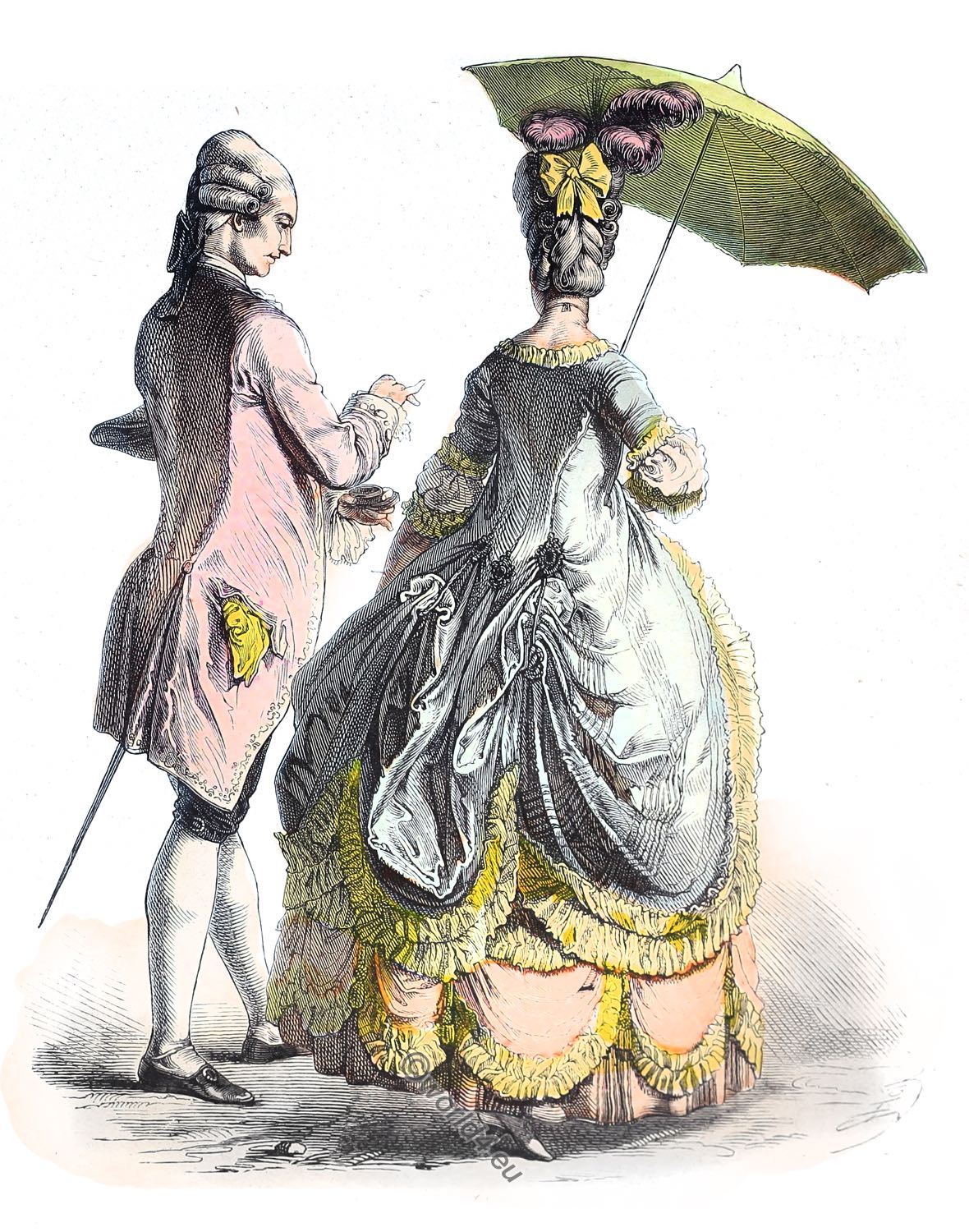
Over the framework of hoops was worn a petticoat (a skirt without a bodice), le jupon. Its length varied according to the fashion of the moment. It was longer at the sides than in front and at the back, the extra length being equivalent to the distance from the waist to the extreme end of the hoops. It had no folds in front and very few at the back, where the slit was situated, but at the sides it was so full that it could pass over the hoops without being at all stretched. Over this was worn a dress, le manteau. This consisted of a close-fitting, low-necked bodice, le corsage, with tight, elbow-length sleeves, and an open-fronted skirt with a train. (Related: The Farthingale. The Corset and the Crinolin.)
The back of the bodice of the manteau was made of six strips, in each of which at both sides, close to the joining seams, a piece of whalebone was inserted. Several rods of whalebone were also sewn into the front piece.
The arrangement for lacing the bodice was in the lining, and was hidden by a strip of material falling over it. The sleeves were arranged in two small pleats running up and backward. The length of the skirt, or la queue, of this manteau was no cm. in front, 125 cm. at the back, 122 cm. at each side. The width was that of seven panels each 47 cm. wide. The skirt was sewn directly to the bodice at the back, but from the back of the hip forward it was attached to a strong band, which was hooked in front. The sewing was done so as to distribute the folds and place one at each seam of the bodice. Inside the skirt were four equidistant rows of small brass rings, running from top to bottom at distances of 25 cm. apart. Through these were passed the strings which enabled the wearer to raise and drape the skirt at will.
Sometimes the skirt of the manteau was cut much fuller. In that case the back panel was cut in one piece with the middle panel of the back of the bodice, which was then slightly taken in at the waist. The whalebones in the back were distributed as in the previous case, but the skirt was not sewn directly to the bodice. In some cases the back panel of the skirt was carried up at its full width to the neck of the bodice and arranged there in a few deep pleats. The edges were sewn to the lining. This garment closely resembled the Schlender worn in the first half of the century. It had been a favorite with Watteau the painter at the beginning of the century, and remained steadily in favor for nearly seventy years. The front edges of the skirt of the manteau did not come quite as far as the fastening of the bodice, so that they were 20 cm. or more apart, exposing the under-dress all down the front.
Above image: Les modes sous Louis XV 1715-1774.
The neck of the bodice of the manteau was as a rule closed to the top, so that the front — Sleeker, la piece—was rarely necessary. The upper edge of the bodice was trimmed with lace of moderate width, and right in front was a large bow of colored ribbon or a diamond clasp. The tight sleeves, out of which long lace engageantes fell to the forearms, reached at least half-way down the upper arm, and were variously adorned at the ends. The front edges of the skirt—which was occasionally lined—had a trimming like that of the sleeves. The skirt itself either fell quite plain to the feet or was gathered as far as the knees into very large folds, which were loosely filled with paper to retain their baggy shape. The under-skirt — which might be either like or unlike the manteau in material and color — was liberally ornamented with its own material or with lace, silk ribbon, or even strips of fur.
Similar variety was shown in the styles of ornamentation, the commonest being volants, flounces, and especially the smooth pleatings, called en platitude, attached to the skirt either in straight lines or in larger or smaller curves. Frequent use was also made of the so-called “plastic ornaments.” These were pieces of the dress material lined with wadding and sewn on in curves and wreaths. The need of warmer clothing was met by wadding and quilting. A thin layer of wadding was laid on a lining of strong linen. Over the wadding was placed the silk material, which was then sewn with fine stitches through the wadding to the lining. The stitching was so done that beautiful patterns were produced, covering the entire dress with tendril-like lines—a design which can be seen on the wadded bodices of the seventeenth century and on doublets of the sixteenth century. It was called matelassé.
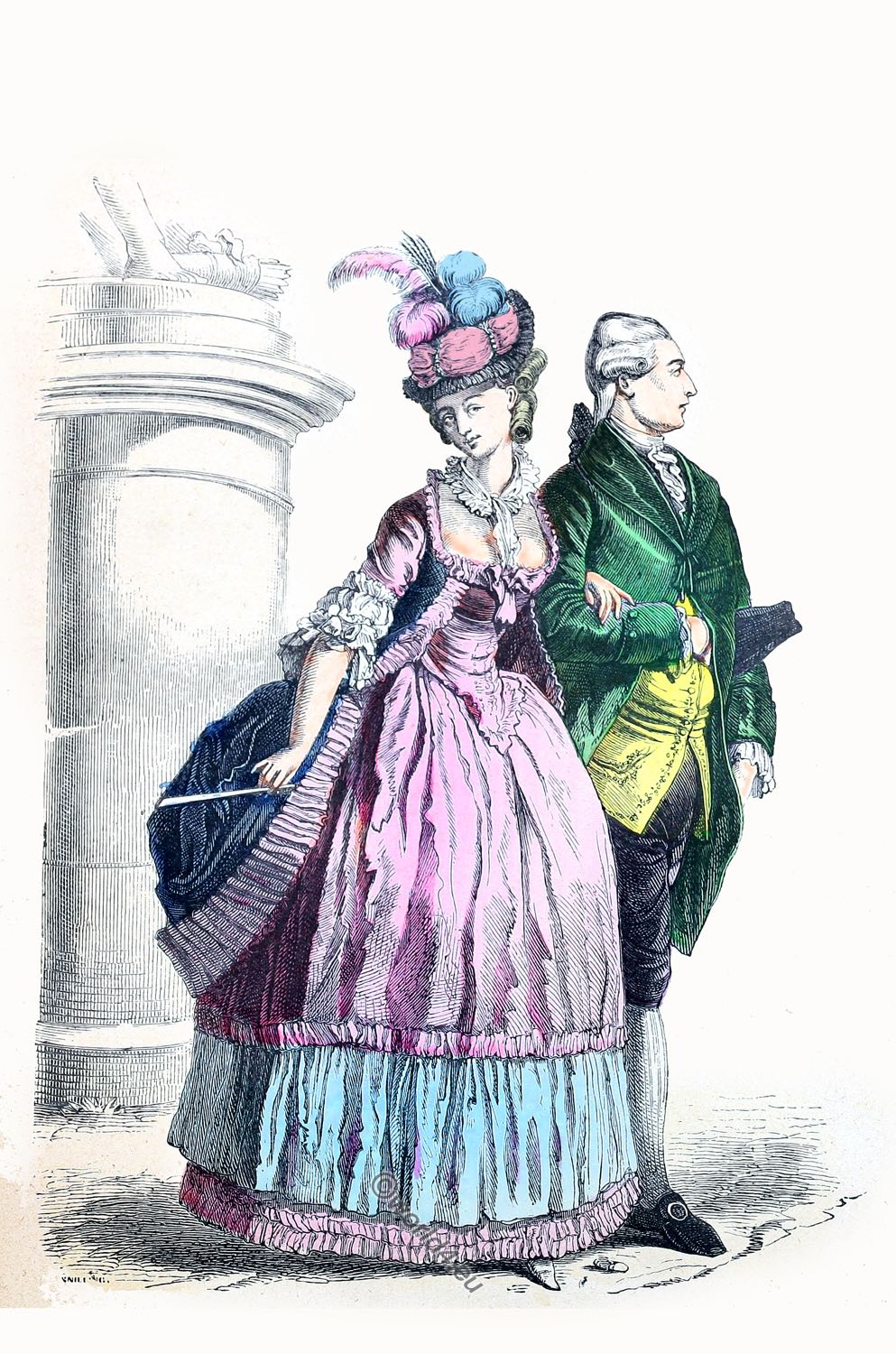
The manteau enjoyed a longer vogue than the broad farthingale, for even after the latter had gone out of fashion the manteau, in almost unchanged form, continued to be worn with the cuts. As a matter of fact, even in later days it changed only its name, for all the new forms of dress that came in about 1790 were cut on the lines of this garment. When, soon after the year 1780, the farthingale gradually disappeared its place was taken by small pads or cushions, called poches, fastened at the hips. These did not last long. In their stead came a fairly large cushion, le cul, so named after the material (cul de crin) of which it was made. The Germans called it cul de Paris, after the city where it was first introduced. The skirt worn with the hip-pads and with the cul was usually pleated all round, and reached to the feet. On the other hand, the dress, le manteau, had again a train, whereas when worn with the farthingale it had been gathered or tucked. Occasionally, also, the bodice was made of a material other than that of the skirt. In such a case the skirt was called un tablier.
In spite of a few not unimportant changes in the cut the bodice when finished retained the form it had hitherto had. The back was now cut in one piece, but was considerably narrower at the, foot than before. It was also less wide in front. A side-piece was inserted between front and back. As had previously been the case, the fastening of the bodice was in the lining, and was concealed by the edge of the dress material. There were fewer whalebones than before—two close together in the back, one in the middle of each side-piece, one at each seam connecting back and sides, and one on each edge of the lacing in front. The neck of these bodices was still very low in front, and so, in imitation of the general practice of Englishwomen, it became the fashion about 1790 to cover the bust.
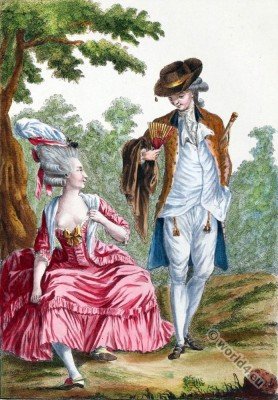
This was done by means of a large triangular piece of fine white cloth, called a fichu, which was put on either under or over the bodice. In the latter case it was crossed over the bust and tied at the back in a large bow. As a rule the fichu was arranged to lie as loosely as possible in front, and for this purpose bent frames were sometimes used. They were called carcasses, but the French gave them the nickname trompeurs, or mentors. The English called them “liars.” The German name was Lügner. Their use, however, was not confined to women with busts ; they were worn also by women with faultless outlines.
About the year 1790 separate jacket-like garments became very fashionable. They were called caracos, and were as a rule close-fitting. Most of the various styles (which soon went out of fashion again) were called jaquettes, and the name caraco came to be applied only to the style that resembled the male dress coat. This enjoyed great favor among German women, who had borrowed it from the riding habit of Englishwomen. Frenchwomen preferred a simpler form of the caraco.
The bodice of the under-dress, over which a caraco or a gown closed only at the top was worn, was always of the same material as the skirt to which it belonged. It was as close-fitting as possible. It was laced at the back, and the front and sides were stiffened with whalebone. Mostly, however, the under-dress was without a bodice. A light corset was worn instead ; it was concealed by a broad front, la piece d’estomac, of the same material as the dress. This front was either laced or otherwise attached at both sides to the robe or the caraco, so that the robe also fitted close to the body. In one style of the caraco the bib was sewn to the over-dress and buttoned down the front, so that it looked like a waistcoat.
Following a fashion that was current in England about the year 1786, women began to wear instead of an over-dress a light corslet, called Mieder by the Germans. This was usually of black taffeta with a white lining ; it had a long peak in front and at the back, like the bodice of a dress. It was stiffened with whalebones a hand’s-breadth apart, and quilted with white silk. These corslets were either laced behind or buckled in front. In the latter case the edges were about four fingers’ breadth apart, and were fastened with broad cloth tapes and steel buckles.
About 1780 it became the fashion to put on over the elegant costume worn indoors and outdoors—this including the short over-dress known as fourreau a tablier (pinafore or apron). This was of some fine white material, and was trimmed all round with a broad frill called falbala (flounce, or furbelow). These tabliers were as a rule very wide, and almost as long as the dress. They had two large pockets sewn on. The fashion lasted only a few years.
During the cold weather of spring and autumn ladies wore mantelets —short capes of silk material, trimmed all round the edges with flounces of the same material or with lace. These were so broad in the middle that they completely covered the wearer’s back ; they grew narrower toward the front. The ends were long enough to reach to below the knee. Made of velvet and trimmed with swan’s-down or with fur, they were worn even in winter, but a more usual winter wear was actual furs, called pelisses.
These varied in style, but were usually short and very wide ; they were fitted with wide half-length sleeves.
The coiffure, which at the time of the accession of Louis XVI was already very high and included much ornamentation, continued to increase in height, and had to be supported by wire frames and pads of various kinds. In 1778 it was often more than 50 cm. in height, and the ornamentation included gauze, pearls, ribbons, tinsel, plumes, and flowers. The side-curls of former days were still continued sometimes long and sometimes gathered below the ears —while either the whole of the long back hair fell down loosely with curled ends or half of it was combed upward and arranged in chignon shape. These two concurrent styles went under the name of cheveux à la conseillère, for they were the fundamental styles on which the hairdressers rung all their changes.
All historical events, phenomena of nature, motifs from mythology, even the happenings of the day, supplied suggestions for ladies’ coiffures and for descriptive names. One style bore the name coiffure à la flore — in this a small basket of flowers was perched on a steeply rising mass of hair. Coiffure à la victoire meant a wreath of laurel or oak leaves. Ladies even wore parterres galants or chiens couchants made of hair. This inventiveness was not confined to Parisiennes. They had worthy rivals in the women of London, Berlin, St. Petersburg, Vienna, Leipzig, Dresden, Gottingen, and Frankfort-on-the-Main. An event of great significance for the women of Paris took place in the year 1785. The Queen, who had just given birth to a child, lost her magnificent fair hair, which had made that color fashionable and caused it to be called cheveux de la reine. Her hairdresser cut the remaining hair quite short, in order to introduce a new style, la chevelure à l’enfant. This had no effect, however, on the hairdressing of German and English women. Even in Paris variations in coiffure continued to be worn, and ere long the cheveux à la conseillère, or the coiffure à l’urgence, as it was also called, was once more the basis for numerous other styles.
Although these styles of hairdressing exceeded both in size and variety those that had preceded them, signs of a change of taste were already perceptible. The piled-up masses of hair began to lose their popularity, and women now crimped their hair and arranged it in a new fashion called hérisson, or the ‘ hedgehog ‘ style. The back hair was still disposed in the chignon fashion, or was allowed to fall down behind with curled ends. Ornamentation, however, had entirely changed, because fashion now ordained that some kind of headdress must be worn. The use of white powder, which had come in with the new century, was continued, but about the year 1790 light yellow or red powder replaced the white, though only for a short time.
Le bonnet
It was about the year 1780 that it became fashionable to wear hats and bonnets even with the high coiffures. When once this practice had become general fashion strictly prescribed whether and when a hat or a bonnet must be worn. The hat was declared to be informal — en négligé. The bonnet was indispensable for la grande parure, or full dress. About 1786 a headdress called chapeau-bonnette was permissible for both purposes. It consisted of a piece of material so arranged that it made a large puff at the top, held together by a ribbon, the rest of the material falling down at the back of the head. The ribbon was tied at the back in a knot, which was surmounted by a plume of colored feathers. A veil completed this headdress. All kinds of ornamentation were added to please individual taste.
Le bonnet, a piece of material (satin, taffeta, or linen) of any desired shape, was fixed to the hair in any fashion that suited the wearer and worn with strings of beads, ribbons, laces, feathers, or flowers. There were no definite rules—the skill and taste of the hairdresser, who was ever inventing new modes, were the only law on the subject. Like the styles of hairdressing, the bonnets had all kinds of curious names—there were bonnets à la tiirque, à l’espagnole, à la béarnaise, or even à gueule de loup. The happenings of the day brought in new styles with new names. For example, the calling up of the Notables in 1787 gave rise to a style called bonnet à la notables.
Although the bonnet was part of full dress, it could also be worn with informal attire. Indeed, it was an essential part of it, if the expression en négligé is used in the meaning it then had, as the opposite of grande parure — Court, official, or ball dress — and not in its present-day meaning of ‘ undress,’ for the bonnet was worn en négligé both by middle-class women and elderly ladies merely for comfort’s sake. Fashionable women and young ladies wore it especially when going to church or as part of walking costume.
From the year 1785 onward bonnets assumed larger dimensions, while coiffures became smaller and, in particular, lower. From this date the shape of the bonnet differed more and more from that of the hat, for up till this time the two sometimes differed from each other only in name.
Le Chapeau
The hat, le chapeau, became fashionable soon after 1780. The sole difference between it and the bonnet lay in the almost horizontal brim. The hat, however, soon began to take various shapes. It was in most cases fairly large, so that it was not hidden by the high coiffure. Usually it was of light material—straw or silk. It could be either high or low in the crown, broad – or narrow -brimmed. Similarly variety was shown in the way it was worn. It was perched on the top of the hair, or placed sideways, or tilted forward. Sometimes it was low down, at other times high up on the head, but in all positions it had to be secured by ribbons or pins ; otherwise it fell off.
Still greater variety was shown in hat-trimming. Feathers, flowers, and ribbons were used. From 1786 women began to wear hats of beaver fur, castors, imitating the shape of men’s hats, but with the addition of rich, gay trimmings. In Paris in the year 1790 ladies, willingly or unwillingly, decked their hats with large tricolour cockades or ribbons.
There had been little change in footwear since the middle of the century. From 1780 onward heels were lower. The long upper also disappeared, so that the shoe now covered little more than the toes. About 1790 buckles began to be fashionable. Soon after 1785 shoes became so comfortable that slippers {mules) ceased to be worn. The fan still retained its popularity, although a formidable rival appeared in 1789 in the sunshade or parasol. As the sunshade was carried chiefly out of doors, the fan was restricted to the drawingroom. About the same time the long walking-sticks known as badines came into use.
BY CARL KOHLER
NEW YORK, G. HOWARD WATT, BROADWAY 1930
Continuing




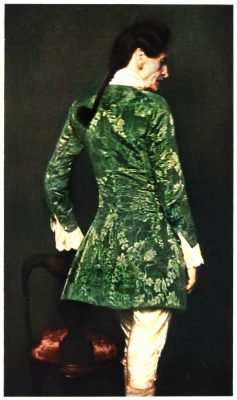
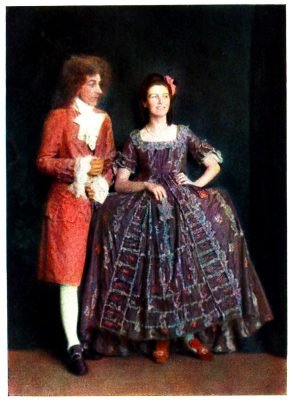

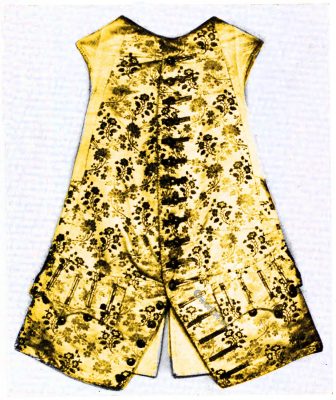


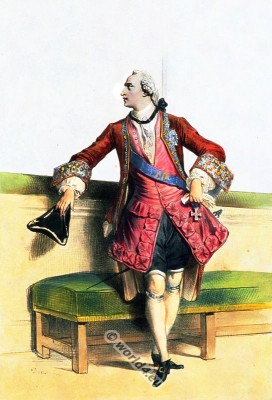
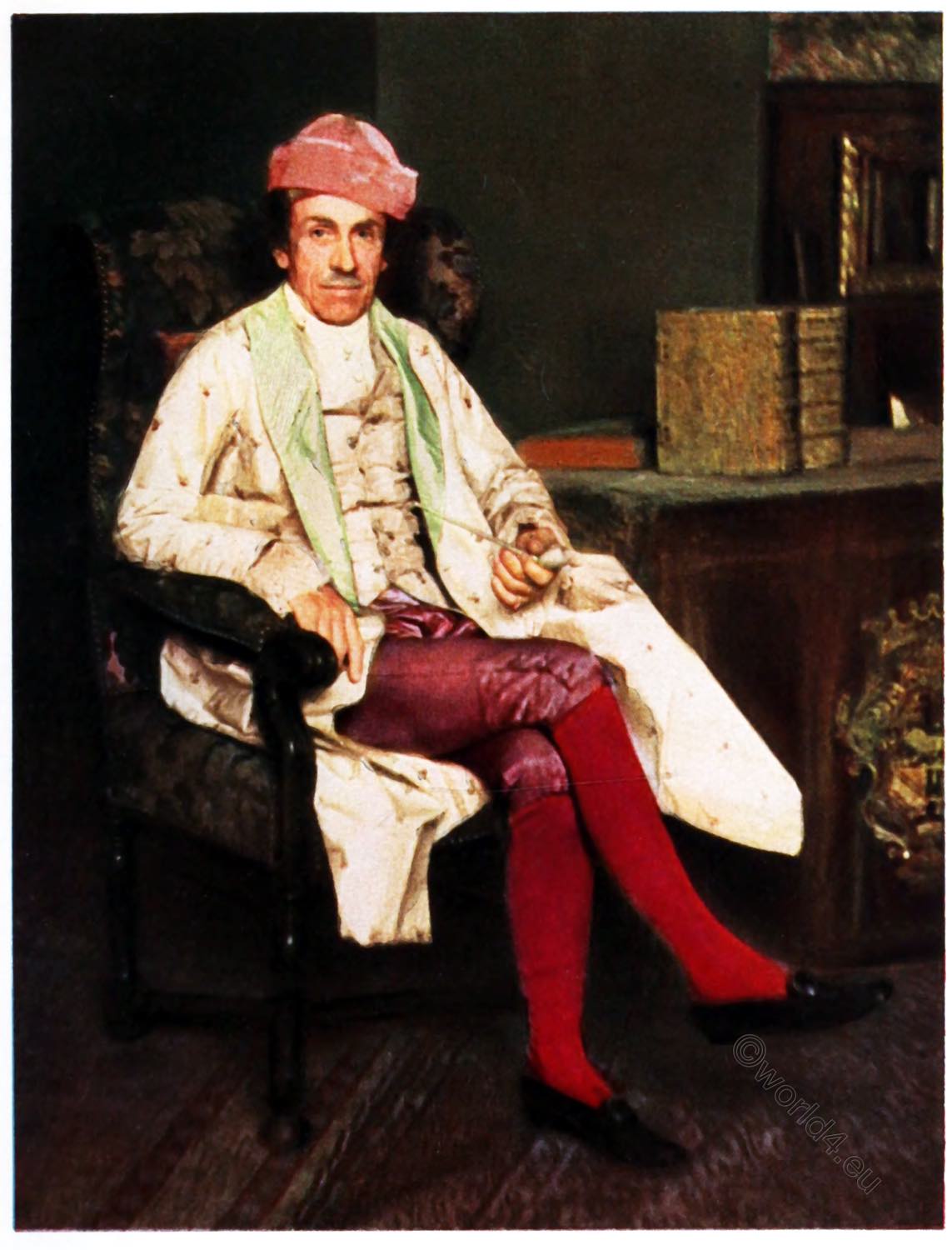




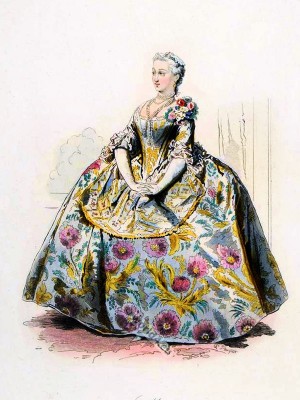

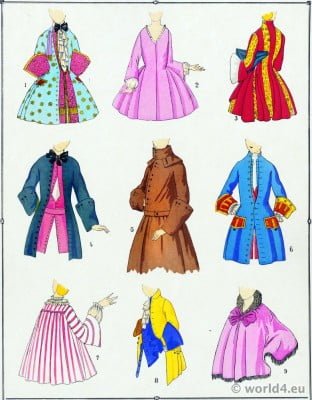

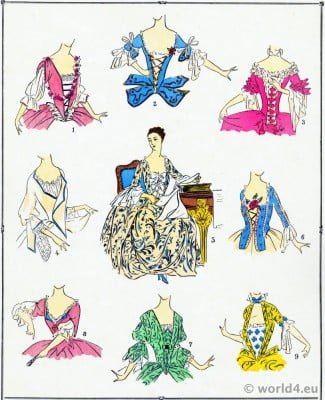
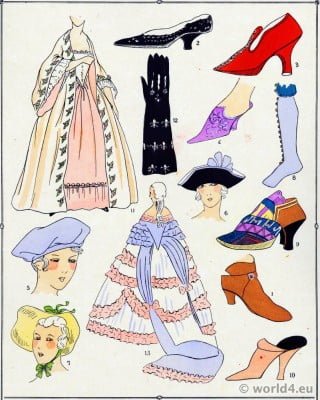
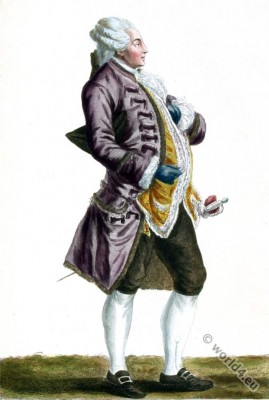
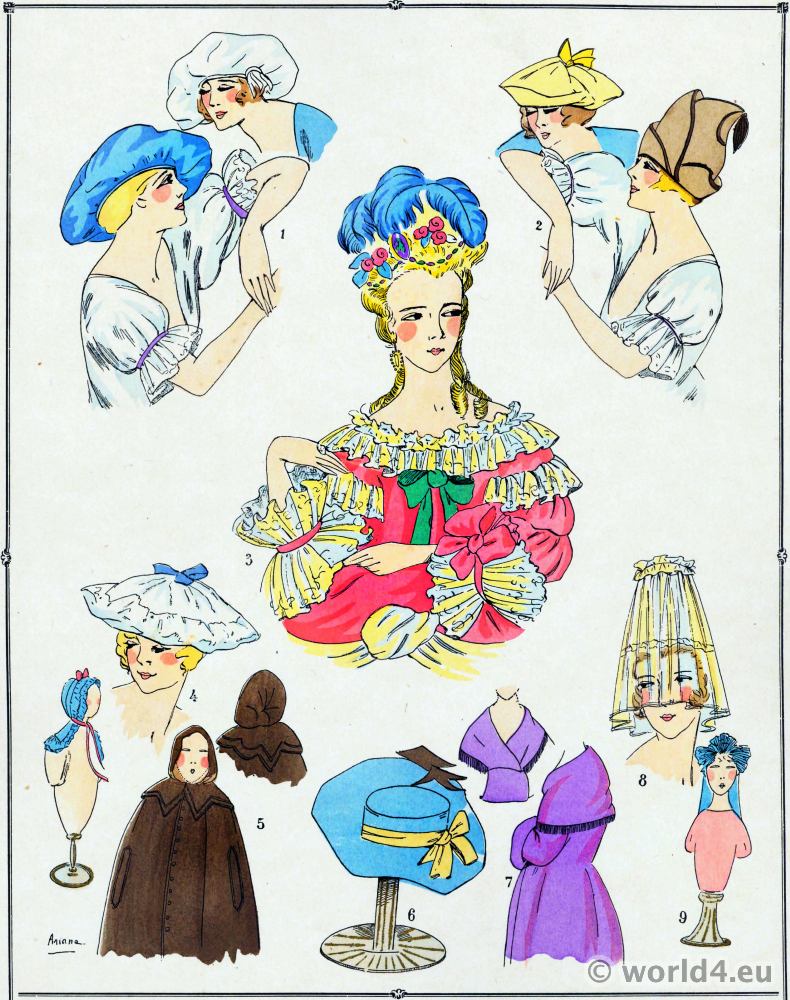
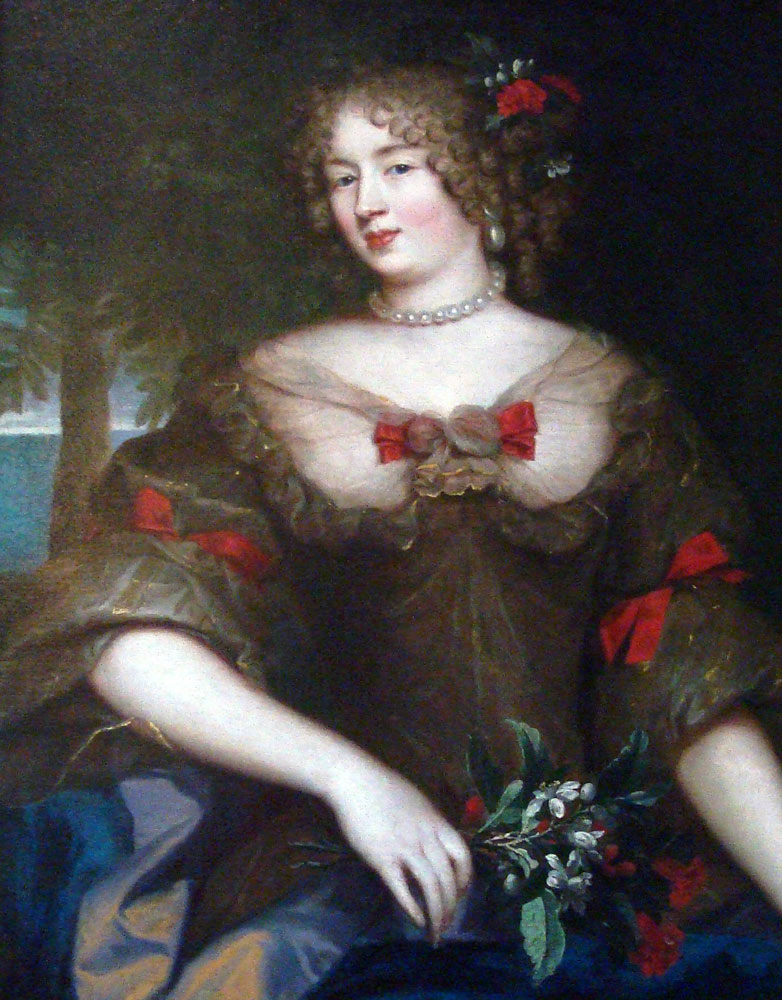
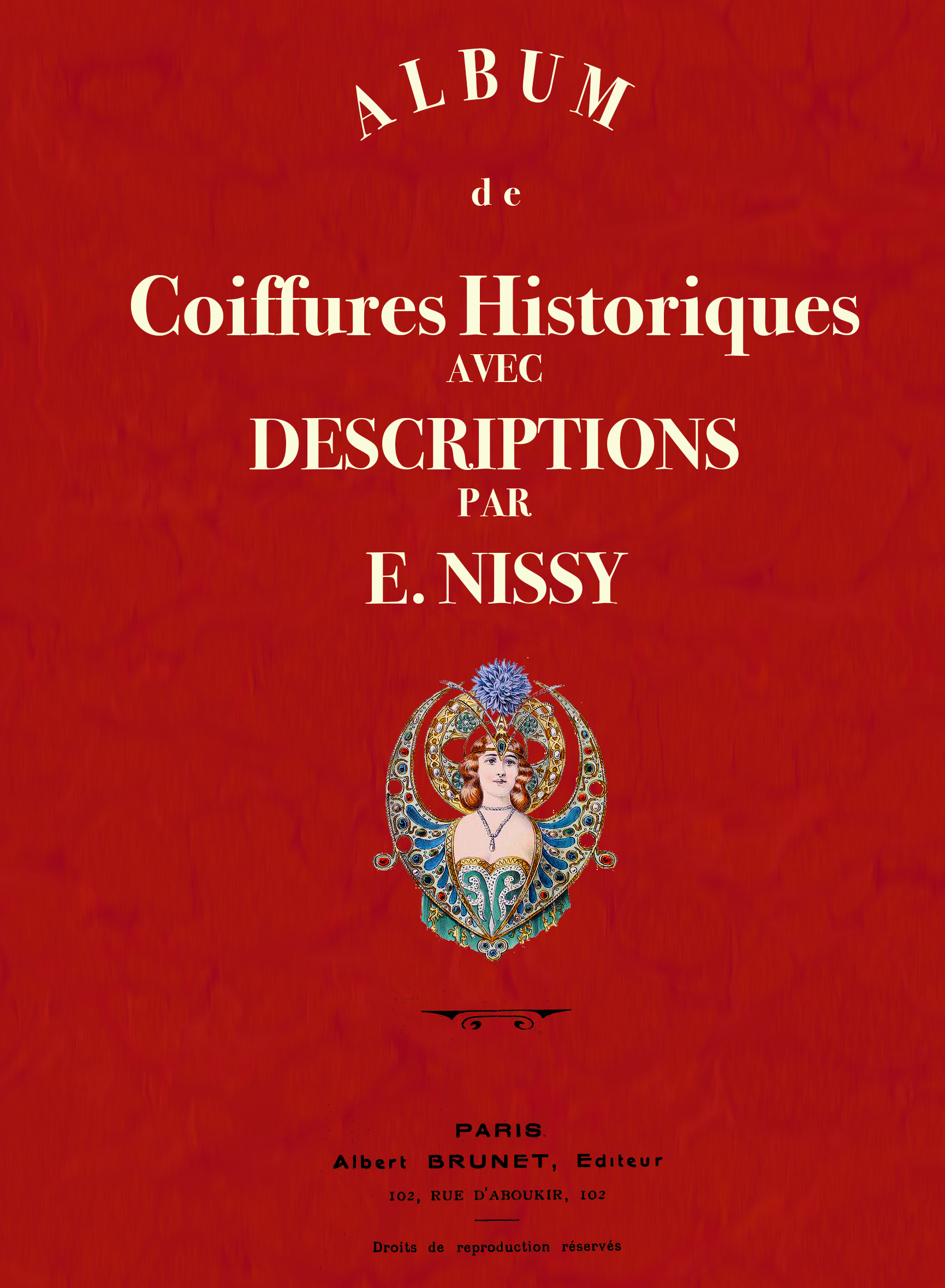
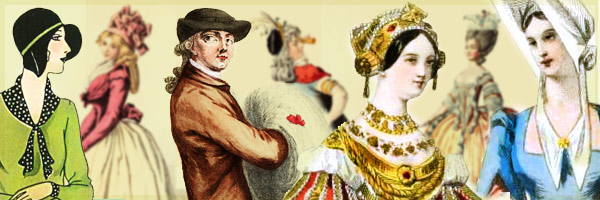
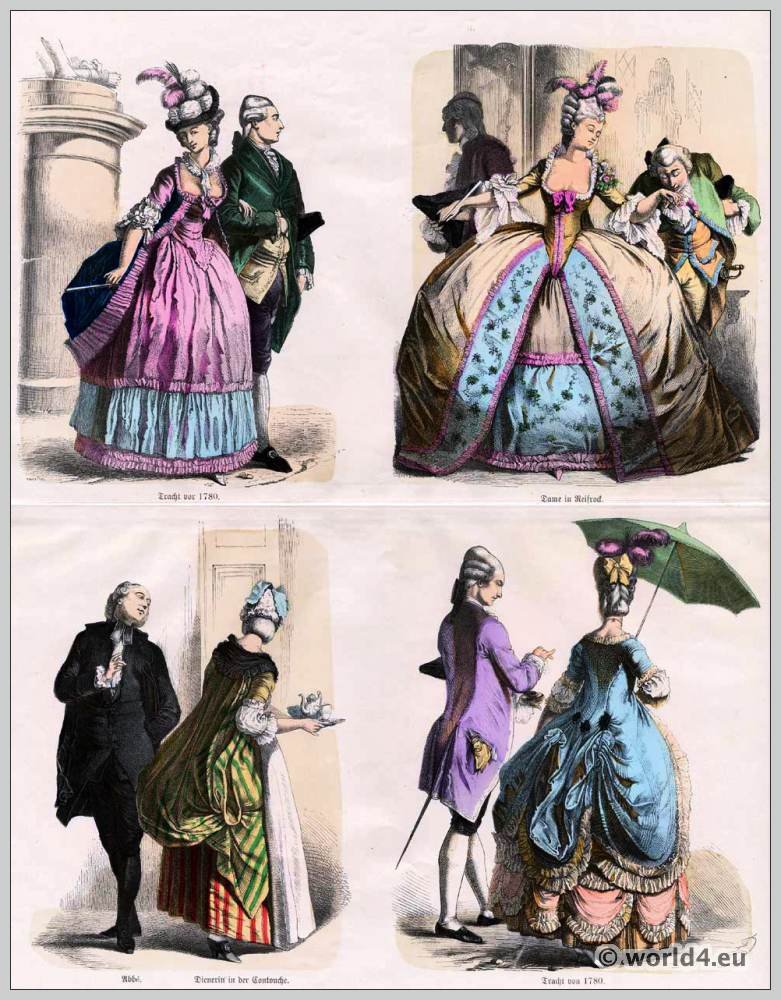
1 Comment